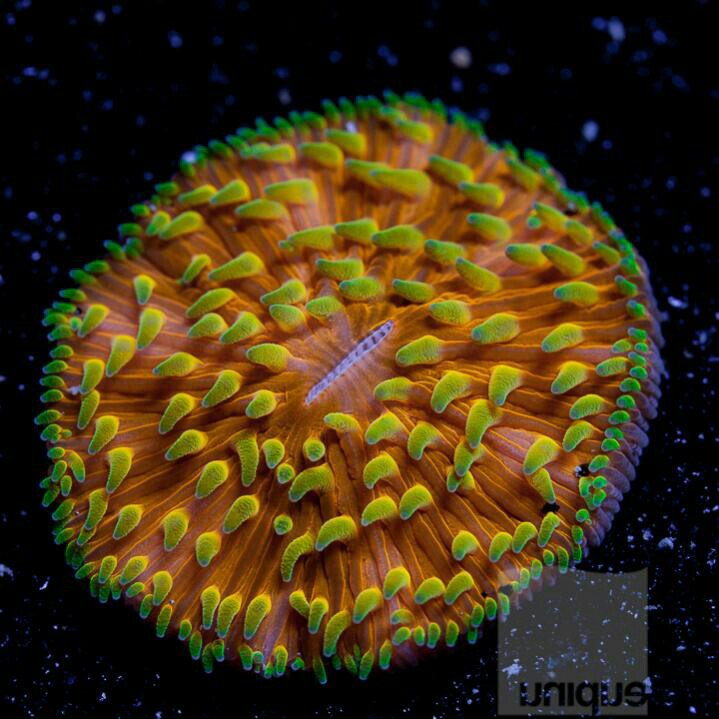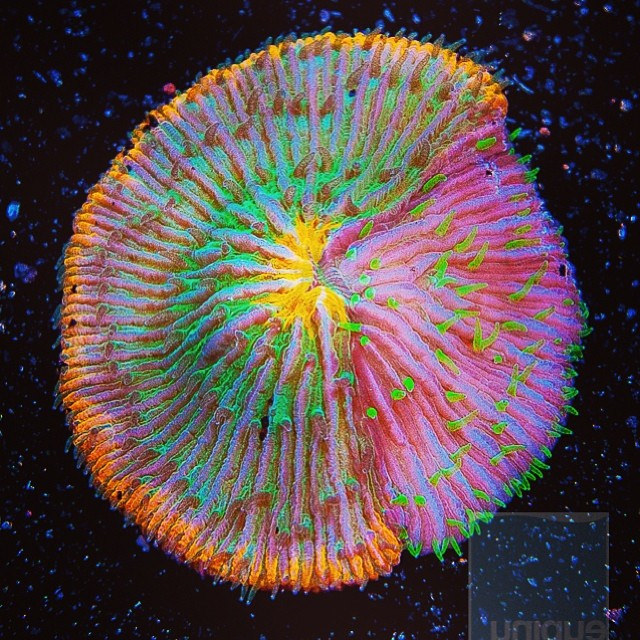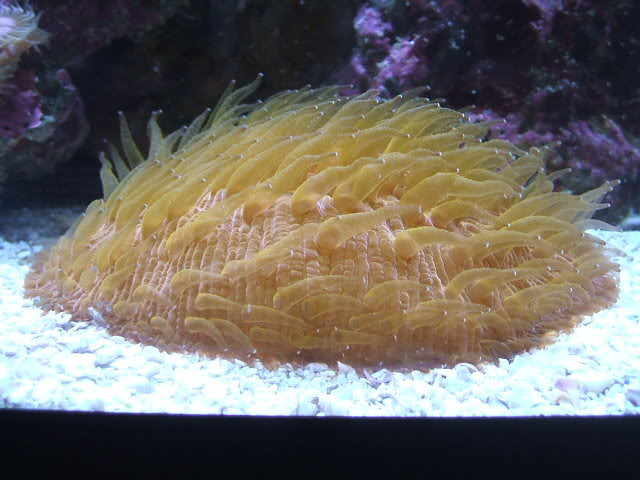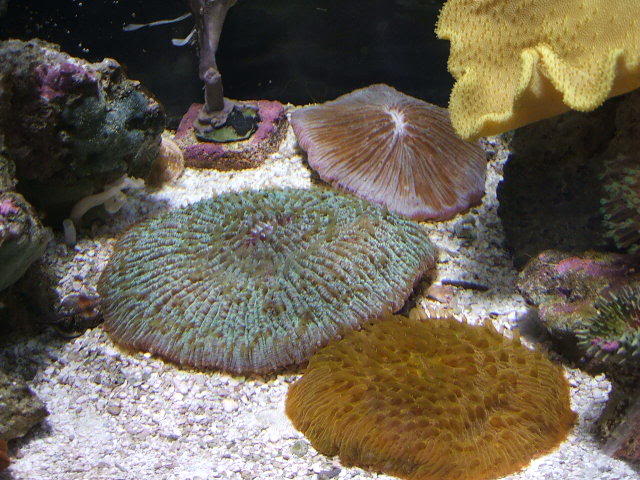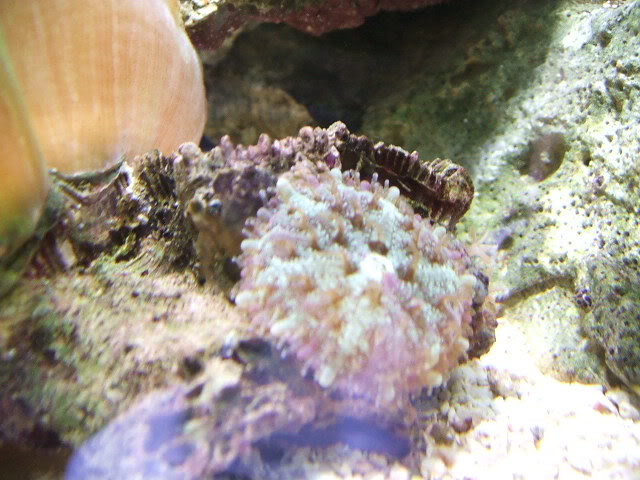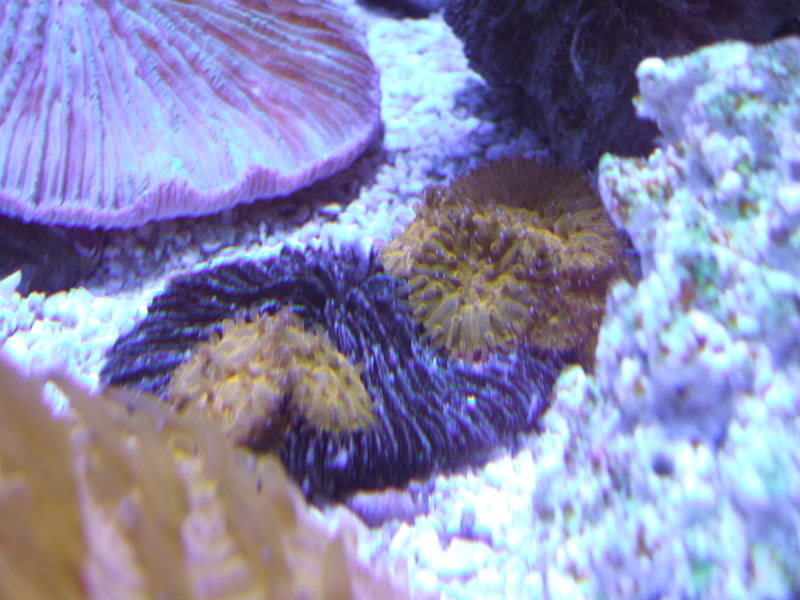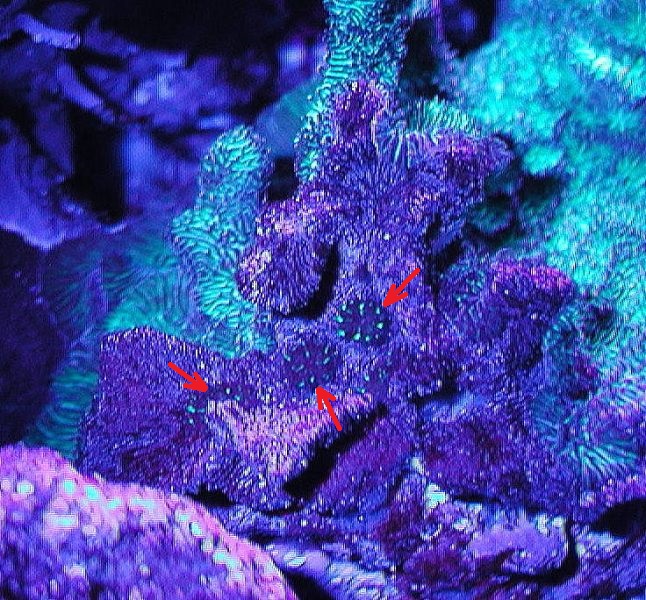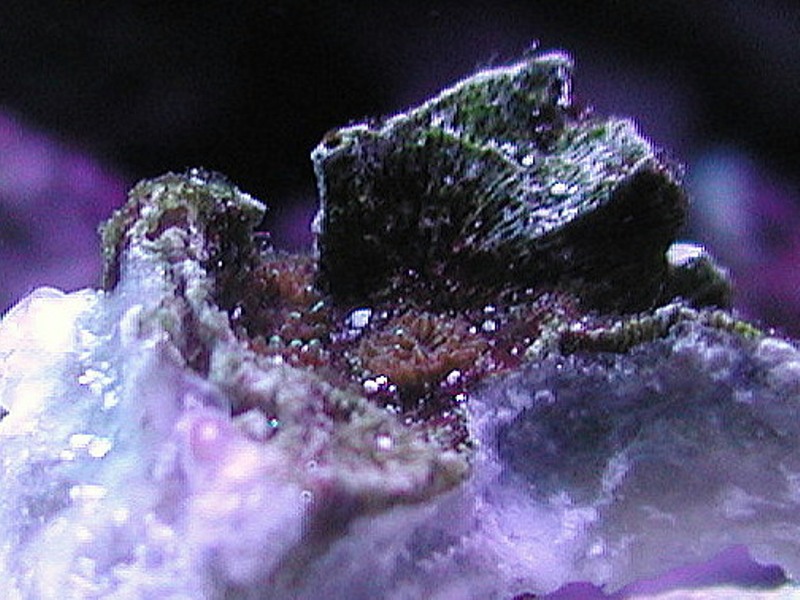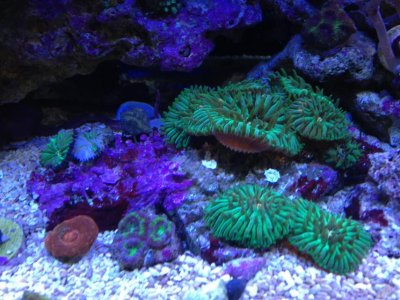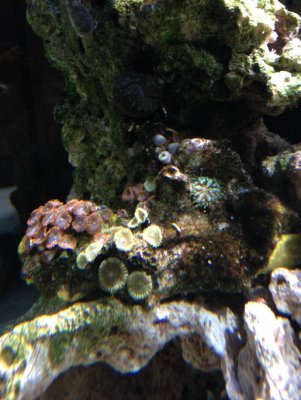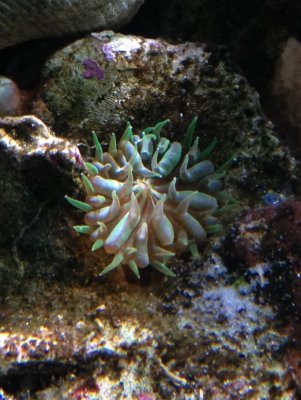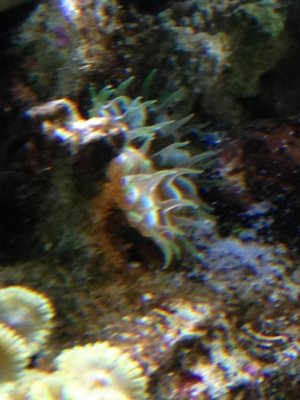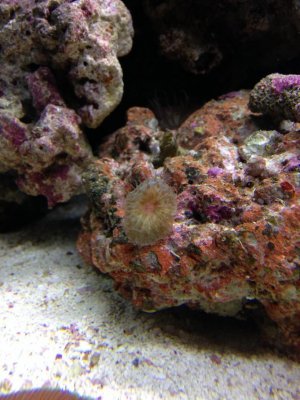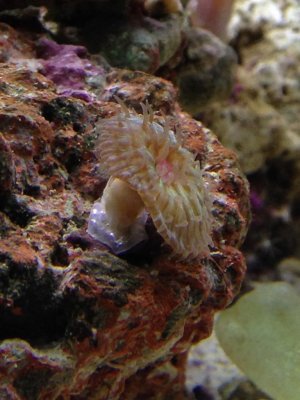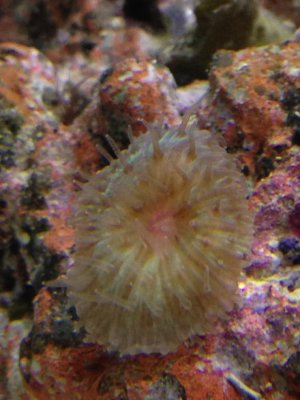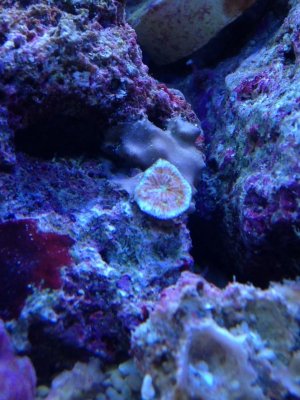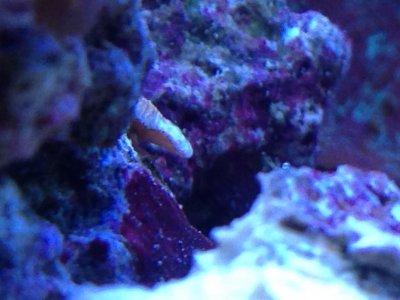If you’re like many reefers, you strive to keep a variety of corals in your systems. Maybe it’s the whole “hunter-gatherer” thing that’s encoded in our DNA. Maybe it’s a fascination with spending our money as often as possible on stuff we like. Perhaps it’s even deeper…Perhaps, we just like all of the cool ways that nature expresses herself in her creations, and we want to enjoy them in our own homes. Oh, whatever..that sounds way to prosaic to be coming from me...Let's just cut to the chase.
At one time or another, a lot of you may have kept a “Plate Coral” (Fungia) species in your reef. You probably didn’t give it all that much thought, either, right? I mean, it just sort of sits on the sand, taking up space in an otherwise forgotten area of your reef. I’d like to think that you treasure your little Fungia more than that, but you may have just thought, “Okay, the thing looks alright down there; fills some space. Everything’s chill.”
There is a lot more to the humble Fungia than you might think. Like many corals, they are interesting and attractive in their own right, and deserve more than to simply be assigned a “parking space” on your sandbed! Let’s take a brief look at these cool corals and explore a few of their charms that you might have taken for granted!

Fungia are typically shallow water, free-living corals, with the exception of one species. They start out life living on rocks, and eventually detach themselves and wander off. Sort of like our own kids, right? Except for the rock part…Characteristically, they are flat and saucer shaped, although some species are slightly “domed” in appearance. Apparently, the more domed shapes lend themselves to more easy purging of sediments and sand from the coral-important for their health. Fungia have a single mouth, which is surrounded by tentacles that emerge from between thin skeletal plates radiating out from the mouth. There are like 40 plus species in the genus Fungia. I’ll bet you didn’t know that…I know that I didn’t know that for many years after I started messing around with them in my reefs. You know, science stuff. I mean, that’s not discussed in hobby forums, right, so who knew? (I’m giving us all a hard time, of course).
They all kind of look the same at first. The cool thing is that, since the identification of the various species relays heavily on things like differentiating the septae and costae (skeletal elements), and general shape of the corallite, there is a good chance that as reefers, we have many different species in our reefs that just fall under the trade name “Fungia.” Talk about a good time- have the gang over, break out the chips and beer, and your Veron book, and have at it. Yeah, good times!

All joking aside, these are surprisingly interesting corals, and they are not particularly difficult to keep if you understand their habits and needs. Before we delve deeper…a quick factoid: Sometimes, we keep Plate Corals of the family Cycloseris in our reefs, too. Often, the they are sold as Fungia. Just like buying a fake Rolex versus a real one, there is an easy way to tell the difference. Fungia have an “attachment scar” on the bottom of their skeleton, showing where they were attached as youngsters. Cycloseris start out life as free-living individuals, and bear no such scar. Easy little trick of the trade that will help you get at least a very “basic” ID started. At best, it will make you seem really knowledgable to the gang at your next club event! Now, don’t get into the habit of sticking your hands into your friends’ reefs to flip over their plate corals in a quest to see what Plate Coral they have. That might not go over too well. On the other hand, I see the rudimentary beginnings of a drinking game forming here…hmm..
Generally, these are pretty hardy corals, and their care is not difficult. Like many corals, the key is to start out with healthy specimens, and then to give them the proper conditions to thrive. Let’s take a little deeper look here.
First off, when you purchase a Fungia, make sure that you’re obtaining an individual with an intact skeleton and no obvious external damage. These corals are remarkably robust, but they do get banged about a bit during shipping and handling, and take a hit or two on the skeleton. Although not life threatening, skeletal damage is a cause for concern, because it cold be indicative of some damaged tissue beneath…and we know that if tissue is damaged, the possibility of something worse happening to the coral increases exponentially. It goes without saying that you should not remove a Fungia from the water while it’s tissues are expanded, because it will damage itself on it’s own skeleton upon removal. Use some common sense here!
I may have given you the wrong impression that these guys are super fragile, which they aren’t. They can be injured relatively easily if we’re not careful in handling them. However, with a dip, good environmental conditions, and quality care, they can recover nicely and live for many years in your aquarium. Bottom line: Inspect your potential purchases carefully, and understand what you might be getting into if you accept a damaged specimen.

Oh, and since we know that they are typically free-living on the substrate when we get them, it makes sense to provide them with a reef system that can accomodate their lifestyle. In other words- they need substrate like sand to wander around on. You could keep them in a rubble-bottomed system, but, in my opinion, the possibility for damage in such a system is greater, especially given the fact that they move. They can unbury themselves if covered by sediment, and right themselves when flipped over. Pretty handy in the reef environment, if you ask me! Yeah, you caught that…they MOVE! That’s pretty crazy, huh? I mean, Fungia aren’t the “LE” poster children that Chalices are, but when was the last time your “Cornbread Trash Mummy Eye” moved on it’s own, huh? See, Fungia are cool.
Of course, when ANY coral moves, it can be a threat to its neighbors, and I’d be remiss if I didn’t at least tell you that there is always a chance for danger when these guys move. In fact, Eric Borneman writes in Aquarium Corals, “Fungia cause unilateral damage to over 94 percent of other corals by depositing thick mucus on them, causing necrosis.” Interesting, and a fair warning. I just want to know how they determined that “94 percent” of other corals can be damaged. Why not “93”, or “65” ? "Whatever, Fellman" Bottom line is that you should use caution when placing them in your reef.
They don’t need to be blasted with super high intensity lighting. They do well under what most reefers would call “moderate” lighting. We keep them under balanced T5 lighting in our systems at Unique Corals, and they do exceptionally well. Typical “reef” conditions for water chemistry parameters suit these corals just fine. The are not particularly finicky in terms of alkalinity, nitrate, or phosphate. Like I always say, don’t obsess over specific numbers…just keep a stable environment and they will do fine.
These corals come in many alluring colors, and that, in part, is what makes ‘em so appealing to us! You’ll see everything from solid oranges, greens, purples, and reds, to complex color patterns with contrasting borders and stripes of pigment. Literally, no two seem to be alike, which is super endearing, if you ask me. Of course, specimens that bear the cool colors and patterns tend to be more scarce, and that generally means that they are more expensive..shocker.

In the aquarium, don’t place your Fungia in systems where there is jacuzzi-power flow, or they’re likely to keep their tentacles retracted indefinitely to avoid damage, which, ironically, will lead to complications, stress, and eventual death for the coral anyways. They like more moderate flow, or strong flow, but not directed at the bottom of the tank. again, I like sand, but I have seen them kept in bare-bottom systems. Just not my favorite look.
Rejoice, coral feeding lovers- Fungia like to eat!
Although they host zooxanthellae in their tissues, they appreciate supplemental feedings of marine-based foods like finely chopped seafoods, mysid, etc. They can handle surpassingly large pieces of foods, too! Although they may remain inflated throughout the day in a reef where the conditions are to their liking, the best time to feed them, IMHO, is at night, when they are fully inflated and in feeding “mode”, ready to accept larger quantities of food. It helps to reduce the flow to keep food going towards the corals. target feeding is the most efficient method. Of course, being completely helpless, these corals can easily have their food “jacked” by bottom dwelling fishes, shrimp, and other inverts, so make sure that everyone gets their fair share. Feed them often for optimum health.
Yes, they have been propagated in captivity via fragmentation. They can respond remarkably
when going “under the knife”, and this bodes well for more serious commercial propagation efforts. The Fungia genus will also reproduce asexually. “Daughter” colonies and polyps may form from broken pieces. They have been known to start regenerating on a supposedly dead skeleton if left in the aquarium, which is quite intruiging. They will also create new daughter polyps from the edge of the coral.
You can propagate Fungia by encouraging the budding of “daughter” colonies. You do this by carefully scoring the tissue in between the "teeth" of the coral with a sharp knife. It’s kind of risky, and not my favorite technique, but doable. You need to make sure that the coral is healthy before attempting this type of fragmentation. Of course, you can resort to simply breaking the coral in half with gloves by using a small wedge and hammer, but it’s kind of hardcore, if you ask me! Using a Dremel or other motorized saw is more civilized, and works far better, producing a cleaner cut. You cut pie-shaped frags from a whole specimen, and they do quite well as long as you provide healthy environmental conditions and feed regularly during their recovery.

Okay, so this has not been a graduate level thesis on the genus Fungia and its care in captivity, but I hope I raised a few points that will help you in your efforts with them. For that matter, I hope that I’ve piqued your interest in them enough so that you’ll get rid of a few Montipora capricornus and keep some Fungia instead! (More Monti Cap hating…LOL). I think that you’ll find that the humble Fungia is way more than a “doorstop” that sits on the sand in your reef. It’s an engaging, colorful coral, with endearing habits and fascinating morphology. In addition to being an interesting coral to keep in your reef, Fungia has great potential for commercial propagation, helping reduce pressures on wild populations for generations to come.
Until next time,
Stay Wet
Scott Fellman
Unique Corals





At one time or another, a lot of you may have kept a “Plate Coral” (Fungia) species in your reef. You probably didn’t give it all that much thought, either, right? I mean, it just sort of sits on the sand, taking up space in an otherwise forgotten area of your reef. I’d like to think that you treasure your little Fungia more than that, but you may have just thought, “Okay, the thing looks alright down there; fills some space. Everything’s chill.”
There is a lot more to the humble Fungia than you might think. Like many corals, they are interesting and attractive in their own right, and deserve more than to simply be assigned a “parking space” on your sandbed! Let’s take a brief look at these cool corals and explore a few of their charms that you might have taken for granted!
Fungia are typically shallow water, free-living corals, with the exception of one species. They start out life living on rocks, and eventually detach themselves and wander off. Sort of like our own kids, right? Except for the rock part…Characteristically, they are flat and saucer shaped, although some species are slightly “domed” in appearance. Apparently, the more domed shapes lend themselves to more easy purging of sediments and sand from the coral-important for their health. Fungia have a single mouth, which is surrounded by tentacles that emerge from between thin skeletal plates radiating out from the mouth. There are like 40 plus species in the genus Fungia. I’ll bet you didn’t know that…I know that I didn’t know that for many years after I started messing around with them in my reefs. You know, science stuff. I mean, that’s not discussed in hobby forums, right, so who knew? (I’m giving us all a hard time, of course).
They all kind of look the same at first. The cool thing is that, since the identification of the various species relays heavily on things like differentiating the septae and costae (skeletal elements), and general shape of the corallite, there is a good chance that as reefers, we have many different species in our reefs that just fall under the trade name “Fungia.” Talk about a good time- have the gang over, break out the chips and beer, and your Veron book, and have at it. Yeah, good times!
All joking aside, these are surprisingly interesting corals, and they are not particularly difficult to keep if you understand their habits and needs. Before we delve deeper…a quick factoid: Sometimes, we keep Plate Corals of the family Cycloseris in our reefs, too. Often, the they are sold as Fungia. Just like buying a fake Rolex versus a real one, there is an easy way to tell the difference. Fungia have an “attachment scar” on the bottom of their skeleton, showing where they were attached as youngsters. Cycloseris start out life as free-living individuals, and bear no such scar. Easy little trick of the trade that will help you get at least a very “basic” ID started. At best, it will make you seem really knowledgable to the gang at your next club event! Now, don’t get into the habit of sticking your hands into your friends’ reefs to flip over their plate corals in a quest to see what Plate Coral they have. That might not go over too well. On the other hand, I see the rudimentary beginnings of a drinking game forming here…hmm..
Generally, these are pretty hardy corals, and their care is not difficult. Like many corals, the key is to start out with healthy specimens, and then to give them the proper conditions to thrive. Let’s take a little deeper look here.
First off, when you purchase a Fungia, make sure that you’re obtaining an individual with an intact skeleton and no obvious external damage. These corals are remarkably robust, but they do get banged about a bit during shipping and handling, and take a hit or two on the skeleton. Although not life threatening, skeletal damage is a cause for concern, because it cold be indicative of some damaged tissue beneath…and we know that if tissue is damaged, the possibility of something worse happening to the coral increases exponentially. It goes without saying that you should not remove a Fungia from the water while it’s tissues are expanded, because it will damage itself on it’s own skeleton upon removal. Use some common sense here!
I may have given you the wrong impression that these guys are super fragile, which they aren’t. They can be injured relatively easily if we’re not careful in handling them. However, with a dip, good environmental conditions, and quality care, they can recover nicely and live for many years in your aquarium. Bottom line: Inspect your potential purchases carefully, and understand what you might be getting into if you accept a damaged specimen.
Oh, and since we know that they are typically free-living on the substrate when we get them, it makes sense to provide them with a reef system that can accomodate their lifestyle. In other words- they need substrate like sand to wander around on. You could keep them in a rubble-bottomed system, but, in my opinion, the possibility for damage in such a system is greater, especially given the fact that they move. They can unbury themselves if covered by sediment, and right themselves when flipped over. Pretty handy in the reef environment, if you ask me! Yeah, you caught that…they MOVE! That’s pretty crazy, huh? I mean, Fungia aren’t the “LE” poster children that Chalices are, but when was the last time your “Cornbread Trash Mummy Eye” moved on it’s own, huh? See, Fungia are cool.
Of course, when ANY coral moves, it can be a threat to its neighbors, and I’d be remiss if I didn’t at least tell you that there is always a chance for danger when these guys move. In fact, Eric Borneman writes in Aquarium Corals, “Fungia cause unilateral damage to over 94 percent of other corals by depositing thick mucus on them, causing necrosis.” Interesting, and a fair warning. I just want to know how they determined that “94 percent” of other corals can be damaged. Why not “93”, or “65” ? "Whatever, Fellman" Bottom line is that you should use caution when placing them in your reef.
They don’t need to be blasted with super high intensity lighting. They do well under what most reefers would call “moderate” lighting. We keep them under balanced T5 lighting in our systems at Unique Corals, and they do exceptionally well. Typical “reef” conditions for water chemistry parameters suit these corals just fine. The are not particularly finicky in terms of alkalinity, nitrate, or phosphate. Like I always say, don’t obsess over specific numbers…just keep a stable environment and they will do fine.
These corals come in many alluring colors, and that, in part, is what makes ‘em so appealing to us! You’ll see everything from solid oranges, greens, purples, and reds, to complex color patterns with contrasting borders and stripes of pigment. Literally, no two seem to be alike, which is super endearing, if you ask me. Of course, specimens that bear the cool colors and patterns tend to be more scarce, and that generally means that they are more expensive..shocker.
In the aquarium, don’t place your Fungia in systems where there is jacuzzi-power flow, or they’re likely to keep their tentacles retracted indefinitely to avoid damage, which, ironically, will lead to complications, stress, and eventual death for the coral anyways. They like more moderate flow, or strong flow, but not directed at the bottom of the tank. again, I like sand, but I have seen them kept in bare-bottom systems. Just not my favorite look.
Rejoice, coral feeding lovers- Fungia like to eat!
Although they host zooxanthellae in their tissues, they appreciate supplemental feedings of marine-based foods like finely chopped seafoods, mysid, etc. They can handle surpassingly large pieces of foods, too! Although they may remain inflated throughout the day in a reef where the conditions are to their liking, the best time to feed them, IMHO, is at night, when they are fully inflated and in feeding “mode”, ready to accept larger quantities of food. It helps to reduce the flow to keep food going towards the corals. target feeding is the most efficient method. Of course, being completely helpless, these corals can easily have their food “jacked” by bottom dwelling fishes, shrimp, and other inverts, so make sure that everyone gets their fair share. Feed them often for optimum health.
Yes, they have been propagated in captivity via fragmentation. They can respond remarkably
when going “under the knife”, and this bodes well for more serious commercial propagation efforts. The Fungia genus will also reproduce asexually. “Daughter” colonies and polyps may form from broken pieces. They have been known to start regenerating on a supposedly dead skeleton if left in the aquarium, which is quite intruiging. They will also create new daughter polyps from the edge of the coral.
You can propagate Fungia by encouraging the budding of “daughter” colonies. You do this by carefully scoring the tissue in between the "teeth" of the coral with a sharp knife. It’s kind of risky, and not my favorite technique, but doable. You need to make sure that the coral is healthy before attempting this type of fragmentation. Of course, you can resort to simply breaking the coral in half with gloves by using a small wedge and hammer, but it’s kind of hardcore, if you ask me! Using a Dremel or other motorized saw is more civilized, and works far better, producing a cleaner cut. You cut pie-shaped frags from a whole specimen, and they do quite well as long as you provide healthy environmental conditions and feed regularly during their recovery.
Okay, so this has not been a graduate level thesis on the genus Fungia and its care in captivity, but I hope I raised a few points that will help you in your efforts with them. For that matter, I hope that I’ve piqued your interest in them enough so that you’ll get rid of a few Montipora capricornus and keep some Fungia instead! (More Monti Cap hating…LOL). I think that you’ll find that the humble Fungia is way more than a “doorstop” that sits on the sand in your reef. It’s an engaging, colorful coral, with endearing habits and fascinating morphology. In addition to being an interesting coral to keep in your reef, Fungia has great potential for commercial propagation, helping reduce pressures on wild populations for generations to come.
Until next time,
Stay Wet
Scott Fellman
Unique Corals
Last edited:


